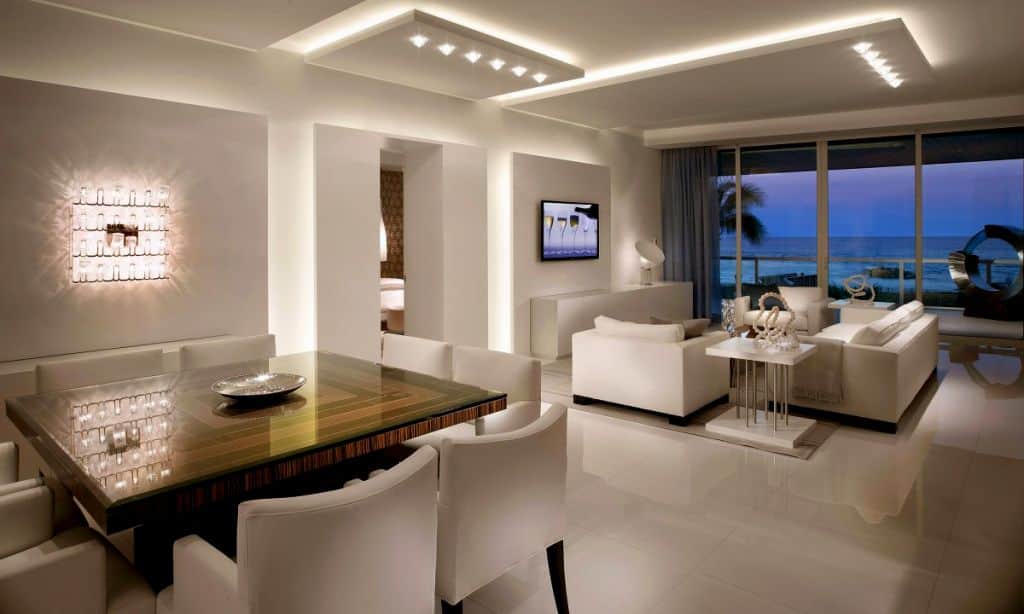Art for art’s sake – l’art pour l’art – people argue about it every day. Design doesn’t have that luxury. No one has ever heard of design for design’s sake, and it applies to any sort of design, whether it’s product design, industrial, or interior design – there’s always a utilitarian function behind it. Its main purpose is something entirely different than design – it’s functionality and usefulness.
But because people love to be surrounded by beautiful things, interior design has been a thing ever since early men painted the caves of Lascaux. People back then wanted to change their immediate surroundings in order to reflect who they are – and we have only become better at this as the centuries progressed. Sure – you can make something perfectly functional, but in order to give your surroundings a soul, you have to make the functionality dress with style.


When it comes to functional lighting design there are two options: on and off.
But when you get a designer involved, they will make lighting functional for your soul – by fitting it to what you really need and will respond emotionally to. Here are stylish light design options that will fit into many home interiors and make them cozier:
Light Control – dimmable LED downlights for those romantic evenings, or even Alexa controlled lightbulbs with which you can control your “light mood” – or just turn on the lights with your smartphone before you enter your home with bags full of groceries. This is both functional and stylish – controlling the mood of the room through lighting is an old trick – but with today’s technology it has become extremely easy to do and not very expensive at that.
This is extremely functional – what about the style? The good news is that modern LED lighting that can become a part of a smart home or be easily manipulated when it comes to brightness, color or temperature, can be put into any fixture. You can use it to your advantage by lighting strategic places in the room. Here is what should be illuminated in order to bring out the accents:
Every room should have the possibility of employing a few different light sources from a few different directions.
There are two trends that people tend to follow when it comes to their home theatre – people either hide their TVs and gaming devices or leave them on full display, along with the sound system and all. It might seem counterintuitive, but hiding a TV set behind a panel or making the whole entertainment area invisible, is a statement too, and it represents a style – a certain way of thinking.
A well-designed entertainment center should not pretend it’s not there – but its design should primarily reflect functionality without unnecessary frills, bells, and whistles. It is what it is – and it’s supposed to be pure comfort and relaxation.
Kitchens and style vs. functionality – it’s a concept with a lot of history and has been a subject of many scientific, social, and psychological studies. There are so many things to consider in a kitchen, that we don’t even know where to start.
Anyone who is trying to design a kitchen will tell you what style they want it to be. Country, modern, Provence, Hollywood Regency, Industrial, Farm House – there are a million choices. But if you ask them how many feet the stove should be from the refrigerator for optimum usability, they’ll look at you like deer in the headlights.
Other things that you have to consider are, of course, functionality, ergonomics, easy solutions, clutter, storage – many things that very often come out after everything is gone and done and there is no going back.
A kitchen is a place where many crimes against functionality have occurred – all for the sake of style. No wonder! It’s the room in the house that holds the most “soul”. It’s where we get together, where we spend most holidays, where memories are made. It’s not a surprise that when it comes to kitchens we think more with our emotions and not with our scientific minds.
When we think with our emotions, especially about designing an interior that we care about, we tend to lose sight of what’s functional and what’s not. Our advice is to see if there are any case studies on the usability aspects of the area you’re designing – here are some kitchen case studies that you could check out.
Once you know what works in terms of usability, you can go to town and turn your creativity on. However, it’s best to have a solid foundation for all that imagination.
This website uses cookies.